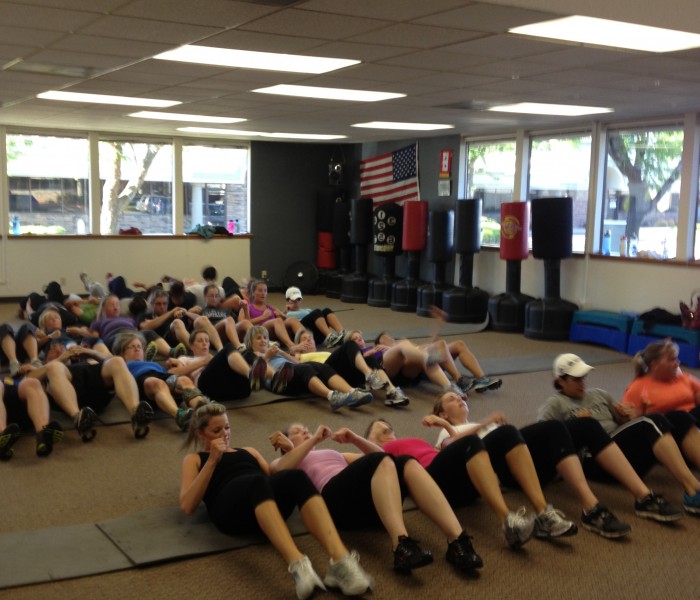This
post was originally published on
this siteOriginally posted at: http://www.nerdfitness.com/
Note: Make sure to read to the end for an important update about Nerd Fitness Coaching!
Over the past 8 years, we’ve had thousands of conversations with clients, Rebels, and community members.
We’ve run polls, read replies, and listened closely to what people struggle with.
Again and again, variations of three statements kept coming up.
- “Just tell me what to do.”
- “I need to see signs of progress.”
- “I can’t seem to stay motivated.”
Each of these reveals an underlying pitfall I see people fall into, and I want to help you avoid making the same mistakes!
“Just tell me what to do.”
Pitfall: overly restrictive plans that leave you burned out
Need: clarity that fits your life
People I talk to feel overwhelmed and overloaded.
They already have a ton on their plate with work, family, and other responsibilities.
It’s no wonder there’s a strong desire for someone to just simplify things!
But it backfires when it leads to plans that aren’t a good fit for your life.
Exercises that aren’t the right level, restrictive meal plans, and schedules that assume you have all the time and energy in the world just leave you burned out and back at square one.
We’ve learned to emphasize fit and flexibility first.
That way, you get clarity on next steps while also making sure there’s enough flexibility to make it a good fit for you. 
“I need to see signs of progress.”
Pitfall: jumping from one program to the next
Need: multiple levels of feedback loops
Change is hard.
And it’s even harder if it feels like you’re spinning your wheels and not getting anywhere! I bet a lot of us have started a new workout, or a new nutrition program, only to step on the scale or look in the mirror and feel deflated and like nothing is happening.
That can lead to program hopping – jumping from one thing to another so quickly it’s hard to evaluate their effectiveness.
Fitness is like investing: the biggest returns take time!
So here’s how we tackle that: we track both effort AND results.
- Effort: workouts completed, habits practiced, consistency
- Results: strength gains, body composition, moving through your day more easily, sleep quality, energy levels, etc.
Wins in consistency are an early form of progress. They are the first step in evaluating whether a program is a good fit for you.
Wins in results come later, but are still important to consider when evaluating any changes that need to be made.
Some tools we love to accomplish each of these:
- Jar of Awesome (effort): every time you make a choice you’re proud of, add a marble (or note) to the jar. Watch the wins stack up.
- Zoom Out sessions (results): set a rhythm (we recommend every 2-6 weeks) to evaluate your progress. This prevents you from adjusting things too quickly while also giving you clear check-in points to make changes.
Having feedback loops in each of these areas makes it easier to stay confident and patient. 
“I can’t seem to stay motivated.”
Pitfall: all-or-nothing thinking
Need: systems that support consistency
This is the big one. Life gets messy. People get sick, work runs late, chaos happens.
It’s easy to get knocked off course and blame ourselves and our lack of motivation for being unable to see things through.
This leads to a lot of all-or-nothing thinking.
Either we are all in (and things are going great!), or we get knocked off course and struggle to get back on track.
Here’s how to avoid that pitfall:
The more you practice implementing these systems, the easier it will be to maintain momentum. 
Quick checklist
When you look at your own plan, ask yourself:
1. Does it give me clarity that actually fits my life?
2. Do I have feedback loops to track effort and results?
3. Do I have systems to help me stick with it when life gets messy?
If yes…AWESOME! You’re set up for success.
If not…no worries. Start with whichever one feels weakest, and shore it up first.
And if you’d like help implementing these strategies, now is a great time to join Nerd Fitness Coaching!
For the first time in 8 years, we’ll be raising prices for new Nerd Fitness Coaching clients after October 31, 2025.
Current clients are not affected.
Starting November 1, the base monthly rate will increase from $197 to $297.
The change reflects 8 years of improvements we’ve made as a program, continued investment in our custom app, and our commitment to hiring and retaining the best coaches in the galaxy. 
If you’ve been thinking about joining, you can still lock in the $197/month rate if you sign up by Friday, October 31, 2025.
Our team would love to chat with you to see if coaching is the right fit!
-Matt
The post 3 things we’ve learned in 8 years of coaching first appeared on Nerd Fitness.
















